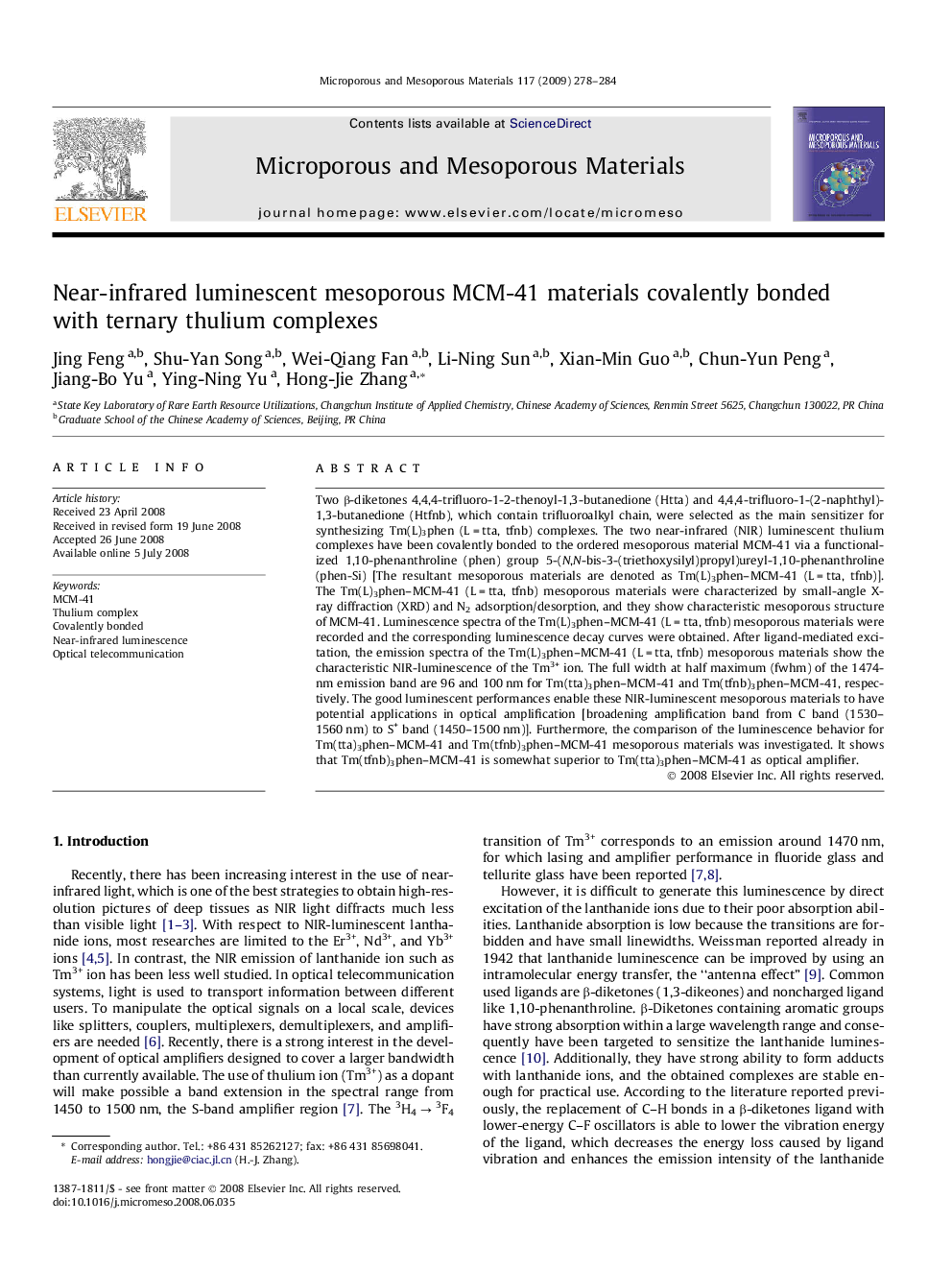| Article ID | Journal | Published Year | Pages | File Type |
|---|---|---|---|---|
| 75337 | Microporous and Mesoporous Materials | 2009 | 7 Pages |
Two β-diketones 4,4,4-trifluoro-1-2-thenoyl-1,3-butanedione (Htta) and 4,4,4-trifluoro-1-(2-naphthyl)-1,3-butanedione (Htfnb), which contain trifluoroalkyl chain, were selected as the main sensitizer for synthesizing Tm(L)3phen (L = tta, tfnb) complexes. The two near-infrared (NIR) luminescent thulium complexes have been covalently bonded to the ordered mesoporous material MCM-41 via a functionalized 1,10-phenanthroline (phen) group 5-(N,N-bis-3-(triethoxysilyl)propyl)ureyl-1,10-phenanthroline (phen-Si) [The resultant mesoporous materials are denoted as Tm(L)3phen–MCM-41 (L = tta, tfnb)]. The Tm(L)3phen–MCM-41 (L = tta, tfnb) mesoporous materials were characterized by small-angle X-ray diffraction (XRD) and N2 adsorption/desorption, and they show characteristic mesoporous structure of MCM-41. Luminescence spectra of the Tm(L)3phen–MCM-41 (L = tta, tfnb) mesoporous materials were recorded and the corresponding luminescence decay curves were obtained. After ligand-mediated excitation, the emission spectra of the Tm(L)3phen–MCM-41 (L = tta, tfnb) mesoporous materials show the characteristic NIR-luminescence of the Tm3+ ion. The full width at half maximum (fwhm) of the 1474-nm emission band are 96 and 100 nm for Tm(tta)3phen–MCM-41 and Tm(tfnb)3phen–MCM-41, respectively. The good luminescent performances enable these NIR-luminescent mesoporous materials to have potential applications in optical amplification [broadening amplification band from C band (1530–1560 nm) to S+ band (1450–1500 nm)]. Furthermore, the comparison of the luminescence behavior for Tm(tta)3phen–MCM-41 and Tm(tfnb)3phen–MCM-41 mesoporous materials was investigated. It shows that Tm(tfnb)3phen–MCM-41 is somewhat superior to Tm(tta)3phen–MCM-41 as optical amplifier.
